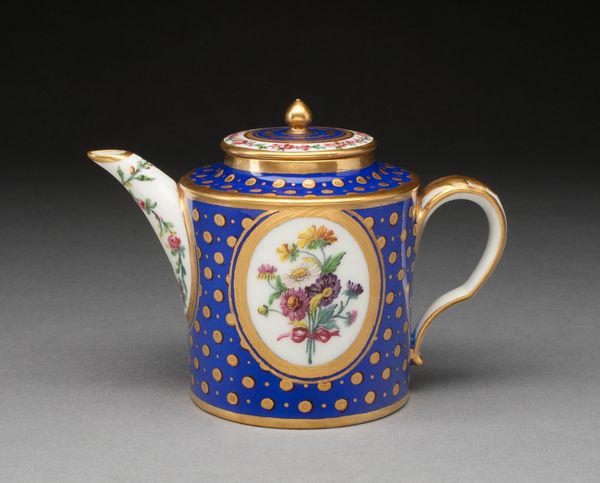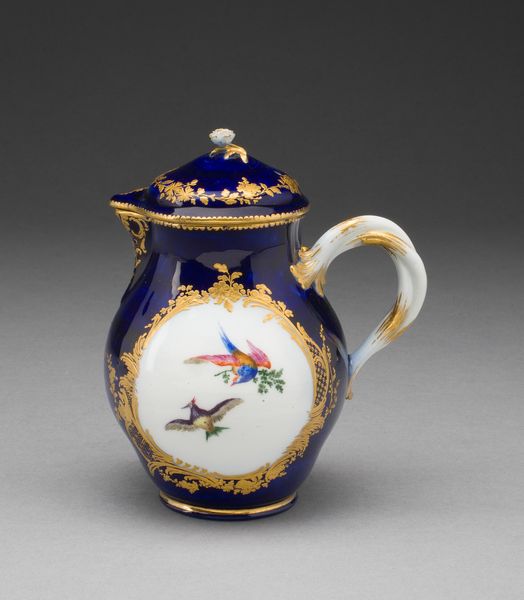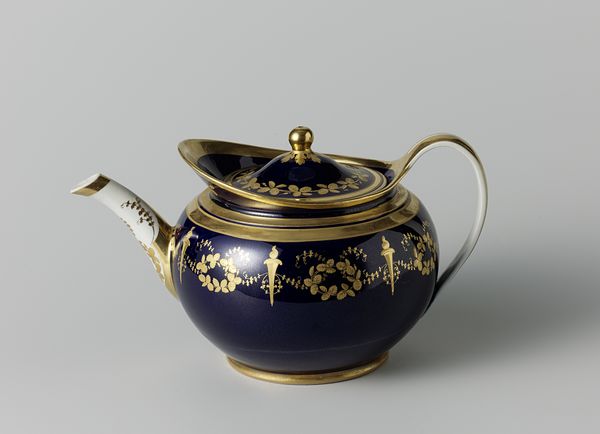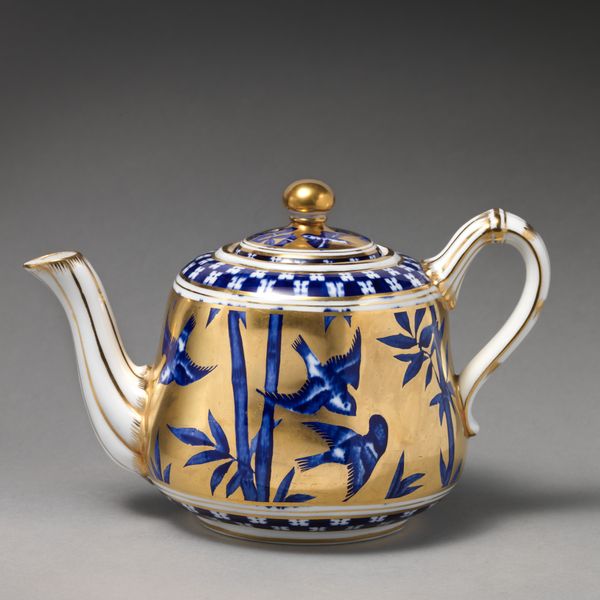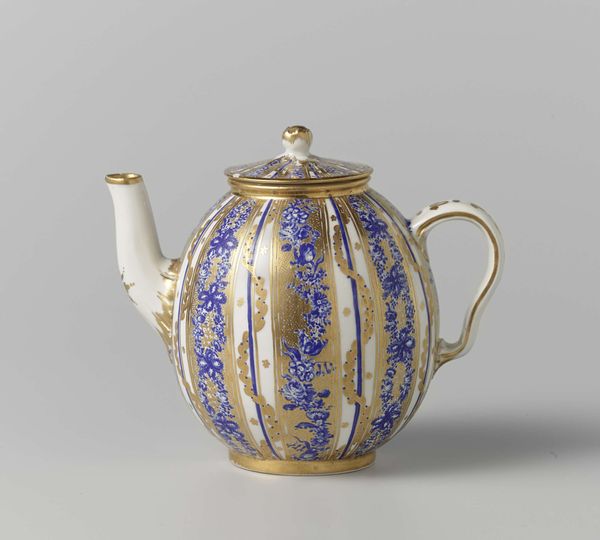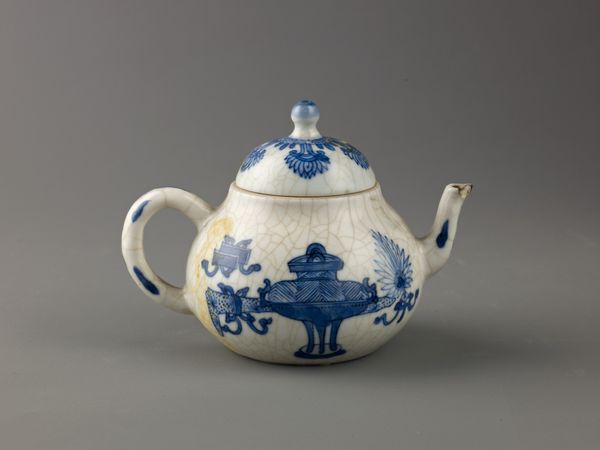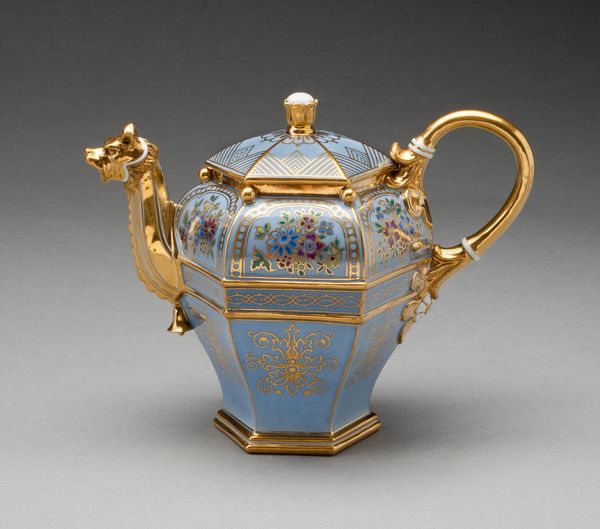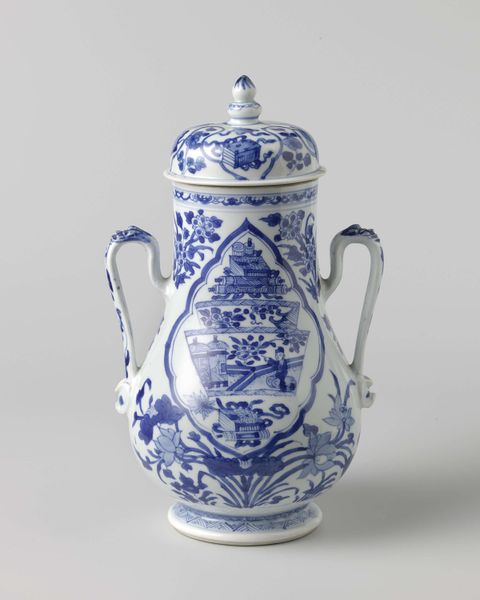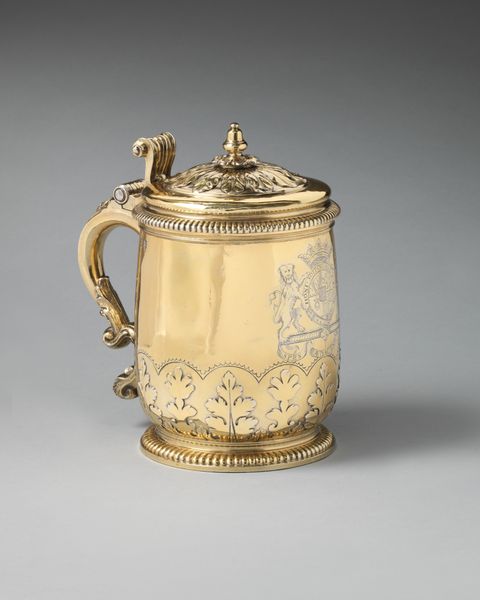
ceramic, porcelain
#
ceramic
#
retro 'vintage design
#
porcelain
#
orientalism
#
decorative-art
Dimensions: 16.5 (with cover) × 11.1 cm (6 1/2 × 4 3/8 in.)
Copyright: Public Domain
Curator: Let's take a closer look at this intriguing object—a Chinese Sugar Bowl with Cover, crafted from porcelain sometime between 1800 and 1820. It's currently held in the collection of The Art Institute of Chicago. Editor: Immediately, I'm drawn to the contrasting fields of color—that intense cobalt blue against the delicate, floral painted medallions. The polished glaze adds an unexpectedly sleek touch. Curator: Indeed, the color is striking. Yet it speaks to a long, complex history. Think of the high value placed on porcelain by Europeans in the 19th century, and the intense efforts made to imitate Chinese techniques. This sugar bowl embodies the dynamics of global trade, of cultural appropriation and artistic exchange, tinged with colonialism. The tea it once sweetened was, after all, a driver of empire. Editor: Certainly. But looking at the bowl in isolation, one can’t deny the careful attention to detail. Consider the handles: their curves and the precise, delicate flourishes of gold leaf around the shoulder and lid. The eye is invited to travel, noting how the shape subtly swells before tapering towards the base. Curator: These formal elements aren't merely decorative. The idealized floral imagery served to soften the harsh realities of sugar production under colonialism and helped make palatable to elites who purchased such wares the raw power relations in an interconnected globe. This bowl and the social rituals for which it was conceived become stages on which class and cultural dominance are performed and reinforced. Editor: The shape itself contributes to that performance. The balanced proportions, the slight elevation of the finial—each element projects an air of refinement, hinting at the rituals of tea or coffee drinking and the refined lifestyles for which these precious commodities became a status symbol. Curator: Exactly, it reflects orientalism through art by representing the intersection of the colonial desire, race and wealth. It suggests luxury, while masking the harsh conditions faced by laborers. Editor: So, both function and aesthetic carefully constructed for their own time. Curator: Absolutely. Reflecting on the legacies we inherit. Editor: It's intriguing how formal and social lenses inform our encounter with such an artifact.
Comments
No comments
Be the first to comment and join the conversation on the ultimate creative platform.
